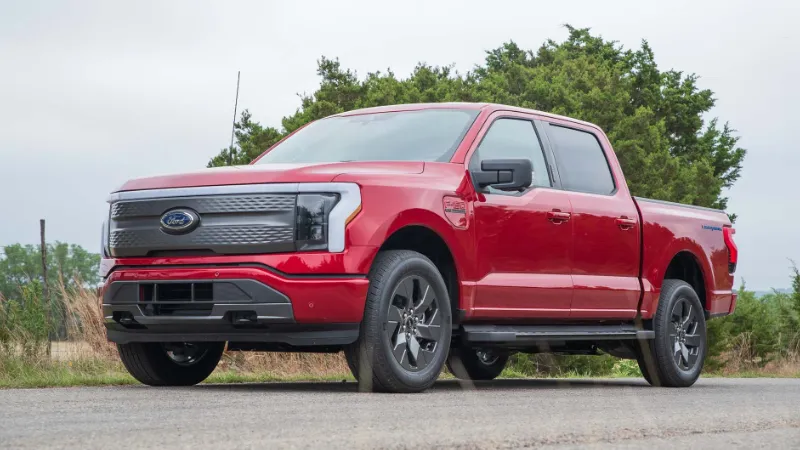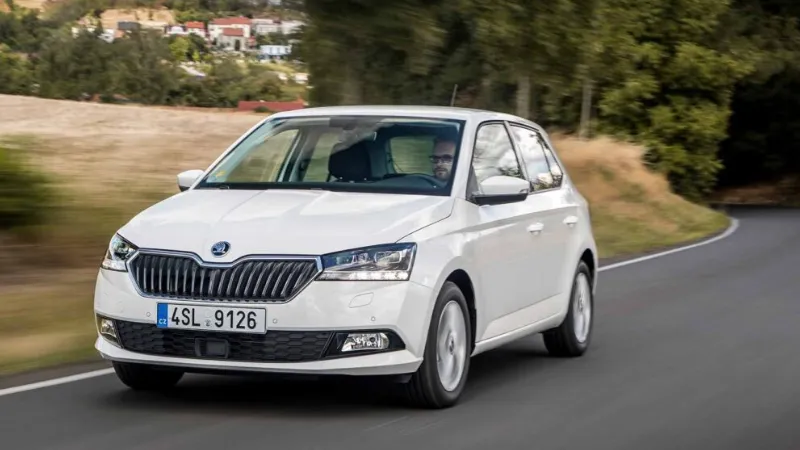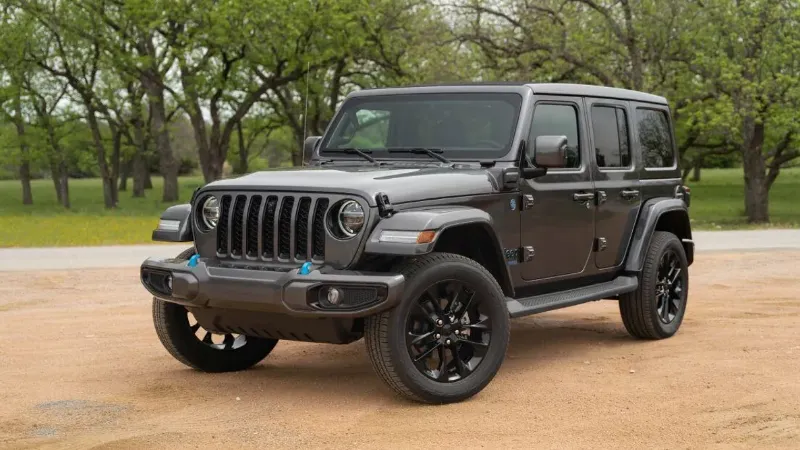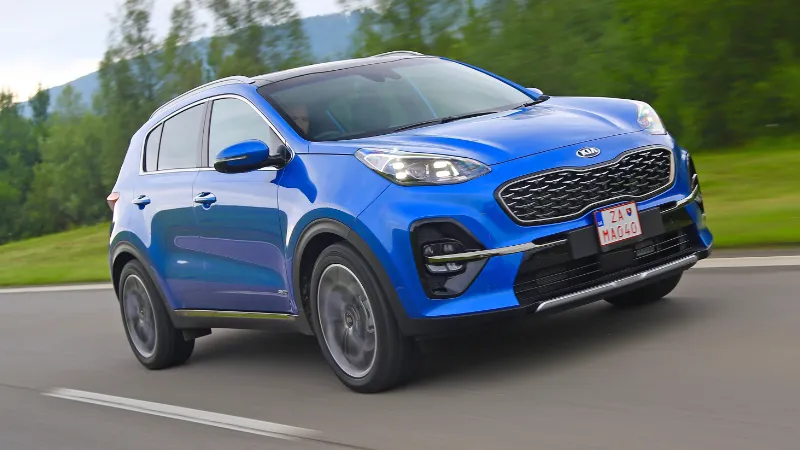Are you ready to buy a Ford F-150 Lightning? Looking for Ford F-150 Lightning? The price, features, images, and frequently asked questions (FAQs) are provided so that you can decide if the type of car is ideal for you.
Ford F-150 Lightning Reviews – The majority of the characteristics that make the gas-powered Ford F-150 America’s preferred pickup truck are present in the 2023 Ford F-150 Lightning, but with an exhilarating battery-powered electric powertrain instead. It has plenty of comfort and safety technology, jolting quickness, stable driving manners, and a strong load capacity.
Keep reading to learn more.
Specs About Ford F-150 Lightning Reviews
Pros
- Electrifying acceleration
- Cavernous cabin
- Long list of features
Cons
- Unimpressive quality for the price
EV Motor, Power, and Performance
Two electric motors and all-wheel drive are included as standard equipment on every F-150 Lightning model. The combined output of the motors is 452 horsepower with the Standard-Range battery and 580 horsepower with the Extended-Range battery; the maximum torque is an impressive 775 pound-feet in both configurations. For such a heavy truck, performance is impressive. The Lightning Platinum we tested reached 60 mph in a scant 4.0 seconds and covered a quarter-mile in 12.7 seconds at 107 mph. We were pleased with the Lightning’s, er, lightning-quick acceleration as well as pleasantly surprised by how well it kept the normal F-150’s upscale driving manners. With a lower center of gravity that helps control body roll and independent rear suspension in place of the gas model’s solid rear axle, the Lightning’s ride and handling are, if anything, marginally more pleasant.
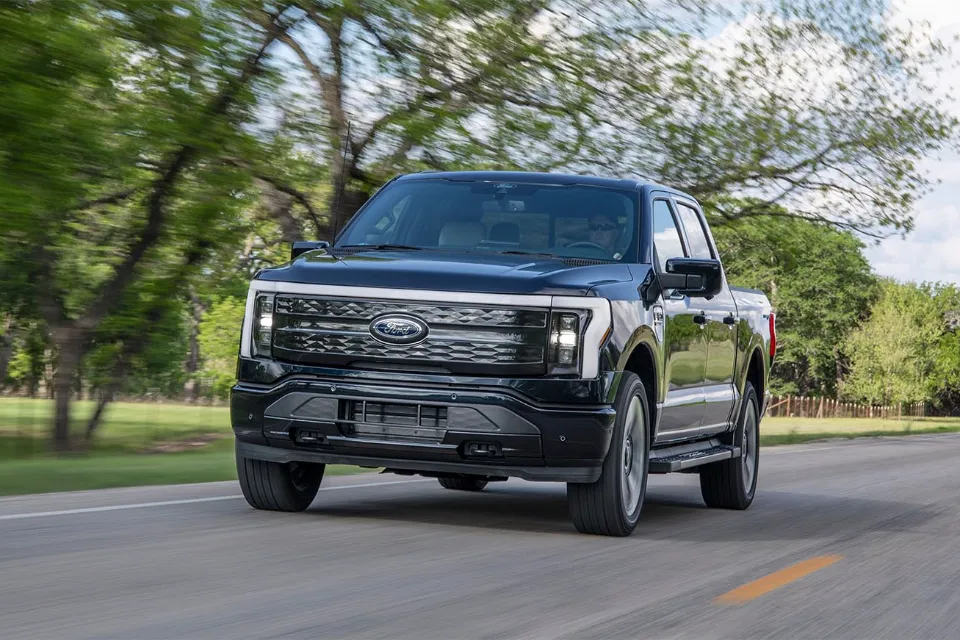
Towing and Payload Capacity
Ford staged an event in July 2019 to prove that a prototype of the A 1,000,000-pound line of train cars loaded with F-150s could be towed by an electric pickup. The official maximum towing capacity of the production model is a mere 10,000 pounds, but only trucks with the optional Extended-Range battery are capable of such feats. Only 7700 pounds of capacity is available for Standard-Range battery models. The Extended-Range model’s payload capacity is only 1800 pounds, while the Standard-Range model’s payload capacity is up to 2000 pounds. During our tow test pulling a 6100-pound double-axle camping trailer, the range of our Just 100 miles at 70 mph remained for Lightning Platinum.
Battery, Range and Charging
For the F-150 Lightning’s motors, Ford provides both a standard-range and an extended-range battery. Ford claims that the 98 kWh usable capacity of the standard range battery, which is good for 230 miles of range (automakers typically don’t use batteries’ full capacities for durability), will meet the standard range’s requirements.
A massive 131 kWh usable capacity extended-range battery will be available for purchase for customers with a little extra cash to spend. So equipped, the F-150 Lightning will offer a claimed 320 miles of range, or 300 if you go for the top-trim Of course, Ford’s claims are only estimates, but it’s important to note that the manufacturer bases its calculations on a 1,000-pound payload in the bed, so EPA ratings may differ.
If you choose the extended-range battery, Ford intends to make charging at home simple by including an 80-amp charging station as standard equipment. Customers will be able to increase the range by 30 miles per hour with that configuration. In just ten minutes, you can add 54 miles to your range if you’re at a public charging station with a 150-kW fast charger.
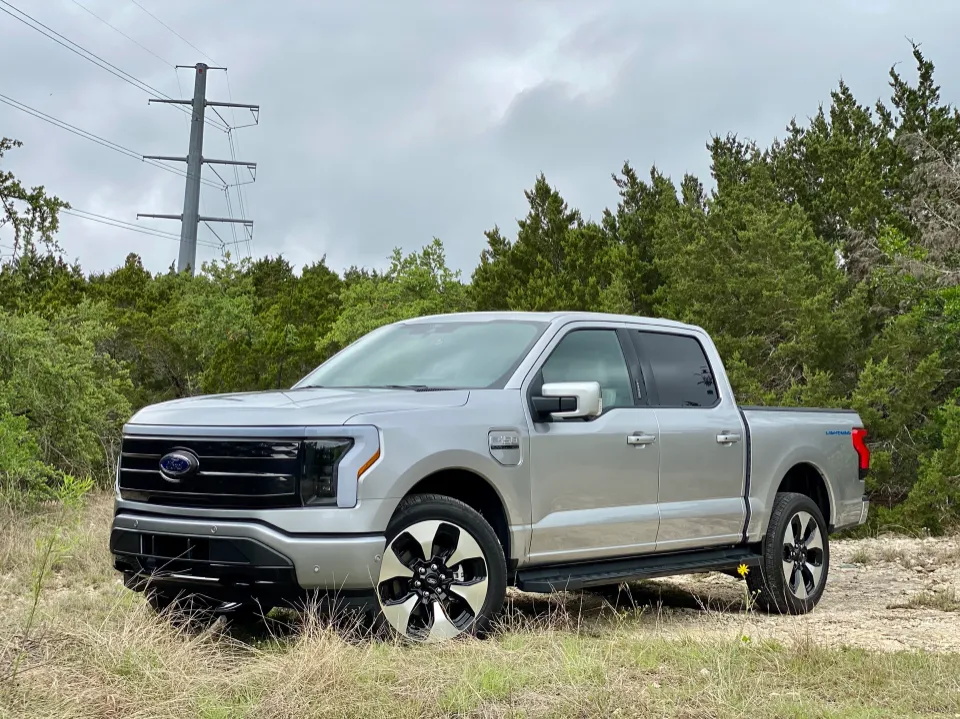
Fuel Economy and Real-World MPGe
The F-150 Lightning Extended-Range has been certified by the EPA to achieve up to 78 MPGe city and 63 MPGe highway; the Standard-Range models are marginally less efficient at 76 MPGe city and 61 MPGe highway. Only 54 MPGe were recorded while we were testing the Lightning Platinum. For more information about the F-150 Lightning’s fuel economy, visit the EPA’s website.
Interior, Comfort, and Cargo
Like the truck’s exterior, the F-150 Lightning’s cabin is much the same as the gasoline-powered F-150 with a few key differences such as an extra-large infotainment display and a voluminous front-trunk cargo bay. Only a crew cab with a 5.5-foot bed is available in the F-150 Lightning. Speaking of spacious, the F-150 Lightning offers a large front trunk (frunk) that can accommodate additional cargo weighing up to 400 pounds by occupying the space where the engine would normally be located in the standard F-150.
Infotainment and Connectivity
Ford’s most recent Sync 4 software is installed in the standard 12.0-inch touchscreen infotainment system, but Lariat and Platinum models have a 15.0-inch screen as an option. In-dash navigation, Apple CarPlay, Android Auto, and a Wi-Fi hotspot are all included as standard. Ford will make use of its collaboration with Bang & Olufsen to offer two distinct optional premium stereo systems, one with eight speakers in the Lariat and one with 18 speakers in the Platinum.
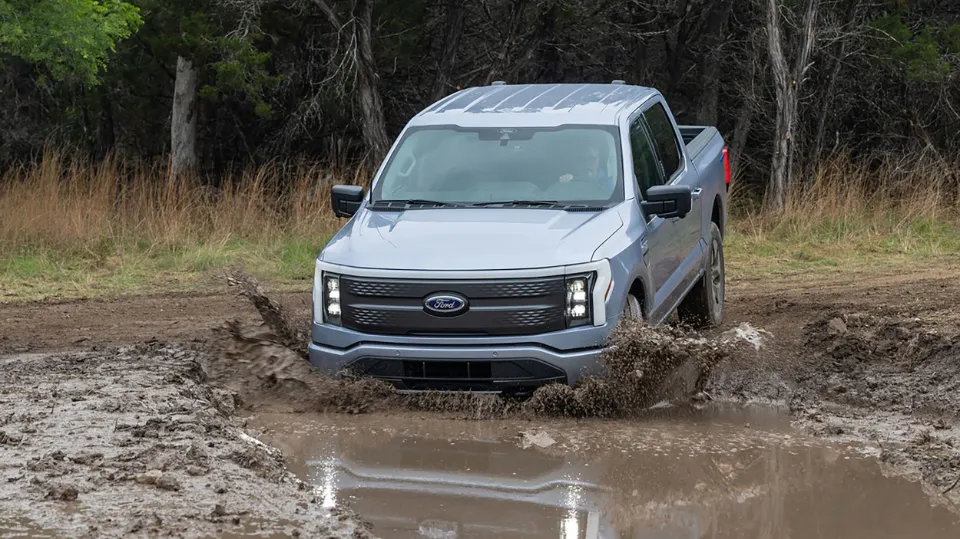
Towing and Storage
How are the towing and storage going? The venerable F-150’s electrification didn’t significantly alter how useful it is on a daily basis. There is space in both rows for a wide variety of gear and equipment, and the interior storage is almost cavernous. The Lightning’s power-operated front trunk supports the flip-up rear seats, which also have lockable storage. The Lightning might just be the most ideal tailgating vehicle available today, with 14 cubic feet of storage space (larger than the trunks of many sedans) and a drain for wet storage. Although the F-150’s are more practical, the Rivian R1T may have more inventive storage options.
Ford claims that the Lightning can tow up to 10,000 pounds, but because of its various options, the maximum towing capacity of our Platinum test vehicle was only 8,400 pounds. If you purchase a Lightning with the standard battery, the maximum towing capacity drops to 7,700 pounds, which is comparable to the maximum a midsize truck can tow. The range of the Lightning decreases dramatically when towing and, depending on the circumstances, could be as low as 100 miles.
A 5.5-foot bed is standard on all F-150 Lightning vehicles. Unlike the standard F-150, you cannot choose a longer bed.
Range and Efficiency
The efficiency and range are how? The EPA estimates the range of the Ford F-150 Lightning Platinum, which is what we tested, to be 300 miles. The truck is predicted by the EPA to consume 51 kWh of electricity every 100 miles. On paper, these estimates make the Lightning slightly less efficient than the Rivian R1T.
We easily outperformed the EPA estimates during Edmunds’ real-world testing, managing to travel 332 miles on a full charge. Our test truck’s electricity consumption during that time was 45.4 kWh per 100 miles, which was slightly less than anticipated. That surpasses the performance of a quad-motor Rivian R1T that we used on the same route to travel 317 miles while consuming 46.9 kWh of electricity per 100 miles.
Ford claims that the Lightning’s extended-range battery can charge from 15% to 100% in 20 hours when plugged into a 240-volt home outlet. Ford claims that the Lightning can be charged from 15% to 80% of its capacity in as little as 41 minutes when connected to a DC fast charger of about 150 kW.
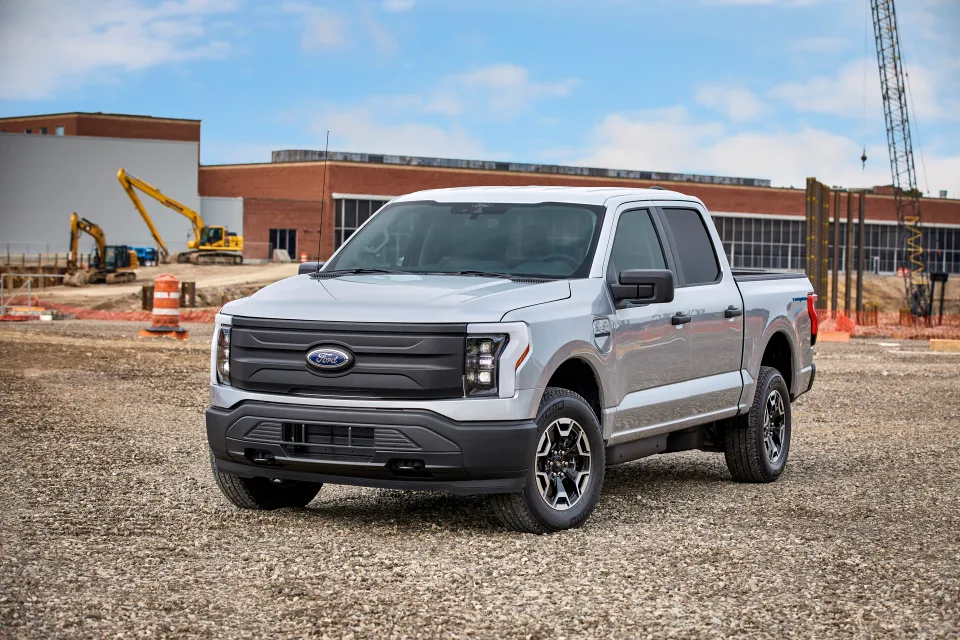
Safety and Driver-Assistance Features
Ford’s new BlueCruise semi-autonomous driving mode is an optional addition to the long list of standard driver assistance features. For more information about the F-150 Lightning’s crash-test results, visit the National Highway Traffic Safety Administration (NHTSA) and Insurance Institute for Highway Safety (IIHS) websites. Key safety features include:
- Standard automated emergency braking with pedestrian detection
- Standard lane-departure warning with lane-keeping assist
- Available adaptive cruise control with hands-free driving mode
Warranty and Maintenance Coverage
In addition to Ford’s standard warranty plan, which covers the F-150 Lightning for eight years and 100,000 miles, there is also an electric vehicle component warranty. This added warranty is comparable to that of other EV competitors.
- Limited warranty covers 3 years or 36,000 miles
- Powertrain warranty covers 5 years or 60,000 miles
- Battery components warranty covers 8 years or 100,000 miles
- No complimentary scheduled maintenance
Wildcard
The F-150 Lightning is exactly what you think it is, with the exception of the earlier supercharged version of the same name (hint: you’re old if you remember that one). Without gimmicks, the Lightning is essentially a fully electrified F-150 and should appeal to current F-150 owners looking for a contemporary take on their favorite truck. The interior is a smidge more modern, but other than the lack of a rumbling truck engine, the F-150 feels, drives and can be used just like any other F-150.
That is arguably the Lightning’s greatest accomplishment; it is an electric truck designed for truck enthusiasts. The only real drawbacks are the truck’s somewhat modest tow rating (in comparison to a standard F-150) and limited towing range, but in exchange, you get a full-size truck that can run your house and sprint to 60 mph in under 4 seconds flat.
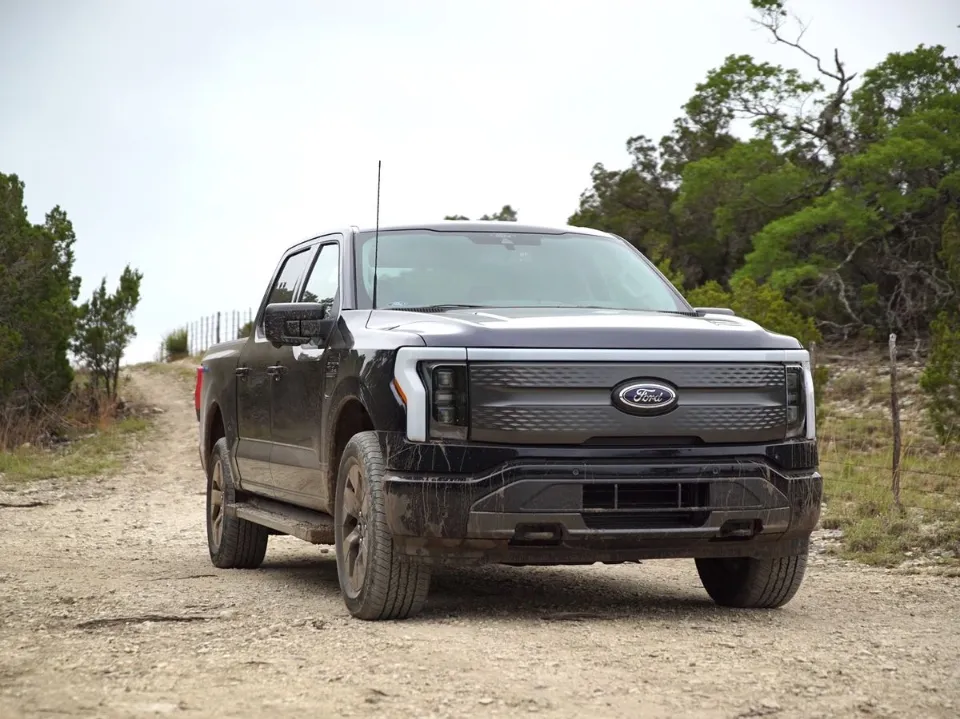
How Much Does the 2023 Ford F-150 Lightning Cost?
$51,974 is the starting price of the 2023 Ford F-150 Lightning. The sticker price for its top trim is $96,874, and any model can have options that cost hundreds or even thousands of dollars.
How Much Does It Cost to Insure a Ford F-150 Lightning?
A number of variables, such as your insurance deductible, the amount of coverage you require, and the kind of insurance you select, will affect the price of Ford F-150 Lightning insurance. Your insurance rates may vary depending on your age, gender, location, credit score, and driving history. To find the best coverage for you, look through our guide to auto insurance.
How does car insurance work? On this page, we’ll discuss some of the most popular types of auto insurance and provide advice on how to determine how much protection you require and locate the most cost-effective policy options.
Questioning how long does GAP insurance last? Maybe you’re curious about your GAP Coverage’s cancellation or refund options. We’ll address all of your GAP Insurance questions in the paragraphs that follow.
Why This Truck is So Significant?
In the United States, the F-150 is the top-selling car., so naturally it’s a huge deal for it to go electric. Ford appears to have taken the necessary precautions to ensure that its vehicle will be able to fulfill the needs of customers who want to haul or tow with the Lightning; 10,000 pounds of towing capability and 2,000 pounds of payload should be sufficient in the majority of use-case scenarios. The pickup truck faithful aren’t exactly known for being early EV adopters, but Ford seems to have taken the proper precautions to ensure that its vehicle will have the chops to fulfill those needs.
A significant consideration is the cost. The Lightning starts at $41,669 for the base model for both retail and fleet customers. Given the wide range of equipment available, this almost seems like a bargain. Expect more expensive trims like the XLT, Lariat, and Platinum models to cost around $90,000.
You may be interested in:
- Honda HR-V Reviews
- Hyundai Palisade Review
- Toyota RAV4 Hybrid Review
- Kia Sportage Review
- Jeep Wrangler 4xe Review
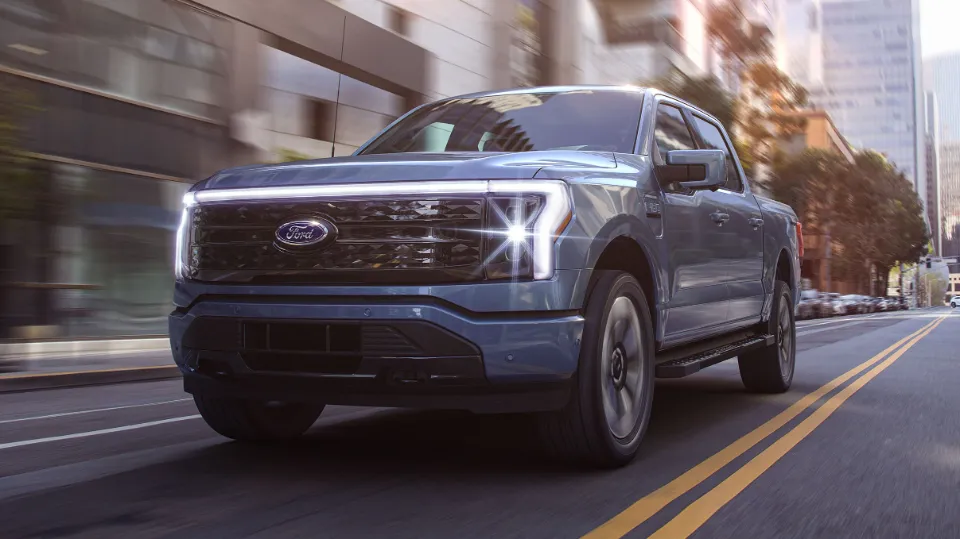
FAQs
Is the F-150 Lightning Available?
You can expect the F-150 Lightning to be released in the spring of 2022. If you’ve decided the 2022 F-150 Lightning is the F-Series truck you want to add to your daily drive, you can place an order for one in the fall of 2021.
How Fast is the F-150 Lightning?
Ford F-150 Lightning acceleration boosted to under 4 seconds
Ford previously boasted that its first all-electric pickup could accelerate from 0 to 60 mph in about 4.5 seconds.
Is the Ford Lightning 4×4?
All Lightning models use a dual-electric-motor setup that gives it standard four-wheel drive. The standard-range model has a power output of 452 hp and 775 lb.-ft. of torque, and a targeted According to Ford, the EPA estimates the driving range at 240 miles.
Ford F-150 Lightning: Should I Buy the 2023 Ford F-150 Lightning?
If you are drawn to both pickup trucks and EVs but don’t require the pinnacle of either, think about the F-150 Lightning. Hardcore truck buyers who demand the best payload, towing, and bed sizes, as well as excellent off-road capabilities, won’t be drawn to the Lightning; for them, the regular F-150 is the better option. Similar to how many electric sedans and small crossovers can travel much farther on a full charge, even though drive range is respectable.
Perhaps the biggest obstacle to the Lightning’s appeal is price and value. For a car that starts over $50,000 and can cost over $60,000, the interior quality falls short. For that amount of money, you might prefer the swankier and more powerful Rivian R1T.
If you have any questions, please leave a comment. KV Auto tries to give you the best car industry information. Thank you for reading.
You may want to know:

